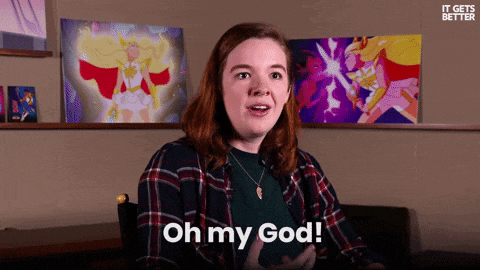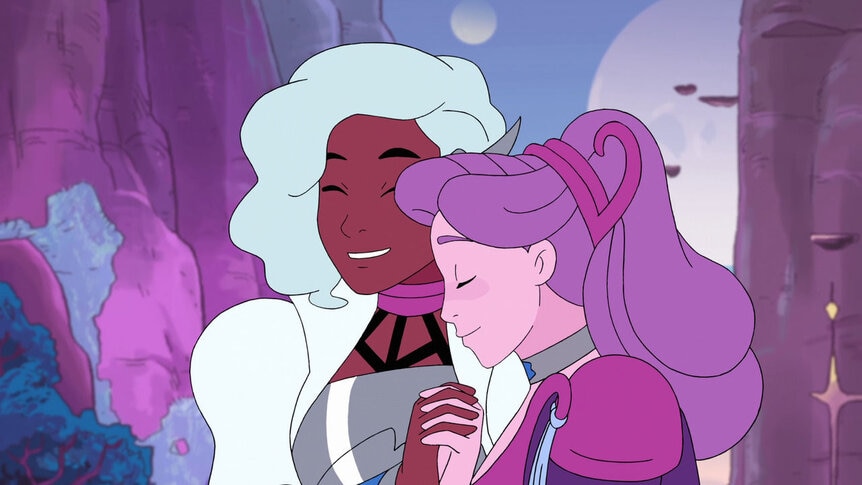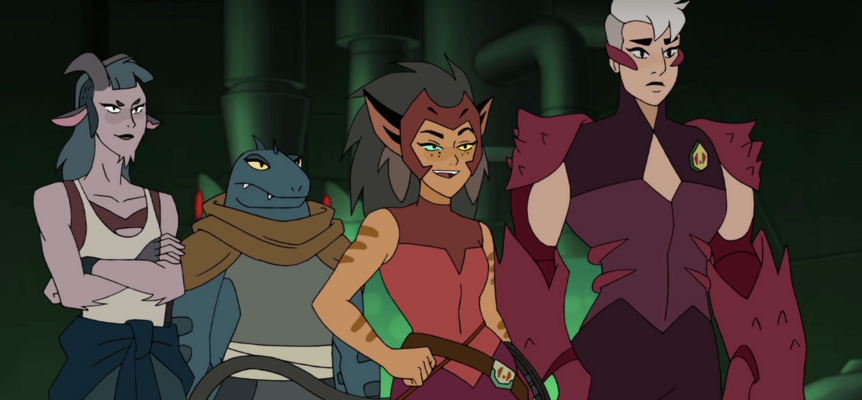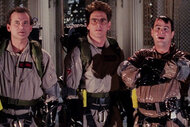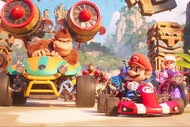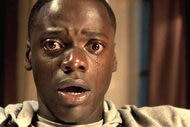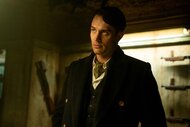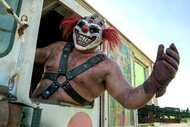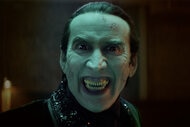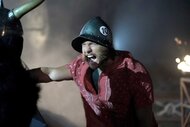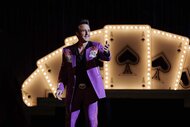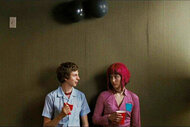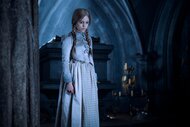Create a free profile to get unlimited access to exclusive videos, sweepstakes, and more!
She-Ra and the Princesses of Power gets even queerer by adding a nonbinary shapeshifter to its cast
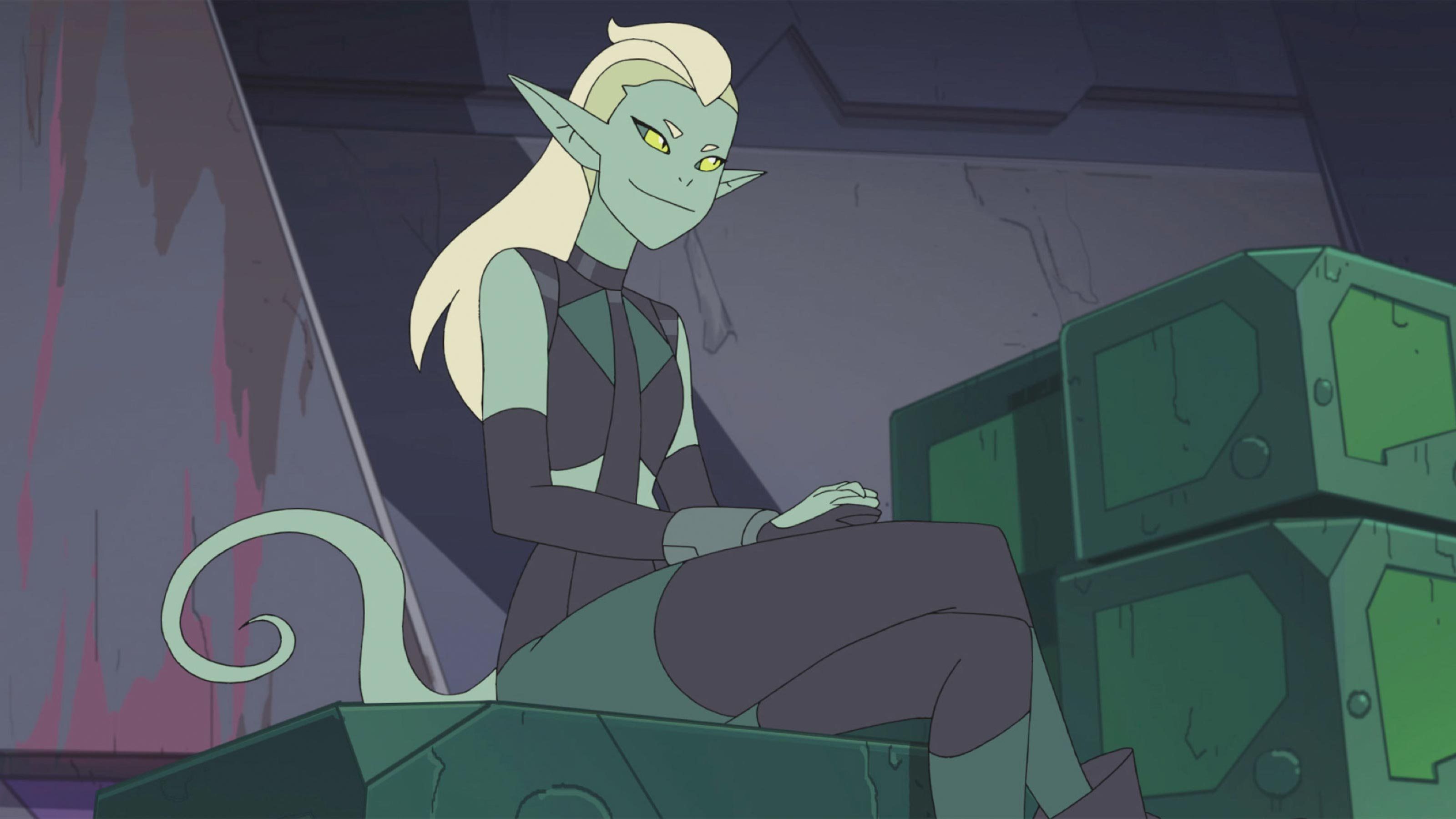
With the return of She-Ra and the Princesses of Power's new season comes the arrival of a new character: the shapeshifting, melodramatic mercenary Double Trouble. What makes Double Trouble all the more exciting is that they are an openly nonbinary character voiced by nonbinary writer, producer, and now actor Jacob Tobia.
Double Trouble joins the already-queer-as-all-get-out series developed by Noelle Stevenson (Lumberjanes). Stevenson was drawn to the original She-Ra due to its "really gay" subtext and in the reboot decided to create a world where queer people, couples, and identities were present, accepted, and portrayed authentically.
She-Ra recounts the power struggle between the invading Horde and the Princess Alliance as they battle over the planet Etheria. But that's really just the pretense for one of the queerest cartoons ever made. (We see you, Steven Universe.) The main struggle is actually between definitely-maybe-ex-girlfriends Catra and Adora. Catra, who is a Force Captain with the Horde, just wants to climb the ranks and finally be the one calling the shots, which she does marvelously of course. Adora wants to do what she believes is right and help the Princesses and the people of Etheria resist the Horde.
Oh, and Adora can turn into She-Ra, a super tall, super-powerful, possibly unstoppable goddess/princess who rides a magical pegacorn with a rainbow mane and is helped by her trusty allies: Bow, the belly-baring bisexual+ heartthrob of your dreams, and Glimmer, a pink and purple demi-god (for realz) who kind of shoots sparkles and can teleport. If you're already overwhelmed by the pastel queer goodness, all I can say is hold onto your butts.
In addition to the implied queerness of these main cutie pies, there are a few explicitly queer couples. Princesses Netossa and Spinnerella are an adorable committed couple and definitely exemplify the meaning of #relationshipgoals, and Bow's fathers, George and Lance, make you think all children should be raised by nerdy gay dads. What's even cooler about both couples is that they bring portrayals of underrepresented queer people to children's TV, showing viewers that you can be queer and fat, Black, dark-skinned, and/or in an interracial relationship.
And, even though Catra and Adora haven't been able to work things out, Catra has met the defected Princess of her dreams: Scorpia. Scorpia has pretty much confessed her love for Catra, and Catra like, didn't run away, which is the equivalent of a proposal for that maladjusted kitty with an attitude-y. Listen, Scorpia and Catra have a lot to work out if they're going to make it as a couple, but damn, I ship it.
The series also presumes queerness as a norm, which is typified in the way characters are presented and how various societies organize themselves. Let me explain, starting at the societal level.
Ostensibly, neither the Horde nor the Princess Alliance — nor any other non-affiliated faction — seems to organize its ranks along gender lines, nor is power distributed inequitably toward men. Catra and Adora's original team included female and male presenting characters, for example, so it seems there isn't a binary view of who is and is not considered a combatant. And, outside of the Princesses — who still allow men to advise and participate in their discussions — it seems that the same is true among the resistance. There is definitely a preponderance of characters who are girls and women, which is a delightfully refreshing shift in the balance of representation. And it seems that the title and power of She-Ra pass from woman to woman.
So gender is very real in the world of She-Ra, but it doesn't manifest in exactly the way it does in our society. Sexism as a whole seems to be more or less nonexistent unless you count Tung Lashor, who seems to be more of a commentary on how ridiculously sexist cartoons used to be more than a real or much-ascribed-to belief system. In other words, misogyny is dead.
The other way queerness manifests in the series is through the presentation of various types of characters who use she/her. For instance, both Scorpia and Huntara have qualities we typically associate with masculinity, including their strength and size. Scorpia also has some feminine qualities, including looking good in a slinky dress. Catra rocks a suit like it's her damn job; Adora's hair poof is some kind of queer — even Glimmer finds a way to make soft glitter butch a thing. It's hard to think of more than a few characters who fit typical gender presentations and roles.
In fact, many of the people who live in the Crimson Waste seem to be without any typical gender markers we use in our society. The goat person and lizard wife who come to join Catra's crew appear fairly agender. Catra calls the goat person "Kyle," which is hard to read as Catra willfully misgendering someone, so I feel like it's safe to view Kyle as some shade of gender non-conforming.
And, beginning in Season 4, She-Ra will have an explicitly nonbinary character in Double Trouble, who gets to be a cool addition to Catra and Scorpia's crew. Coming from the Crimson Waste, Double Trouble can assume many forms and takes their acting seriously.
Tobia, who will voice our soon-to-be-favorite mischievous mercenary, recognizes that fantasy series like She-Ra provide a "way of building other realities and imagining the world as it could be, not as it is."
The introduction of Double Trouble to an already powerfully queer series demonstrates She-Ra's commitment to authentic queer representation, something queer, trans, and nonbinary children and adults deserve.
